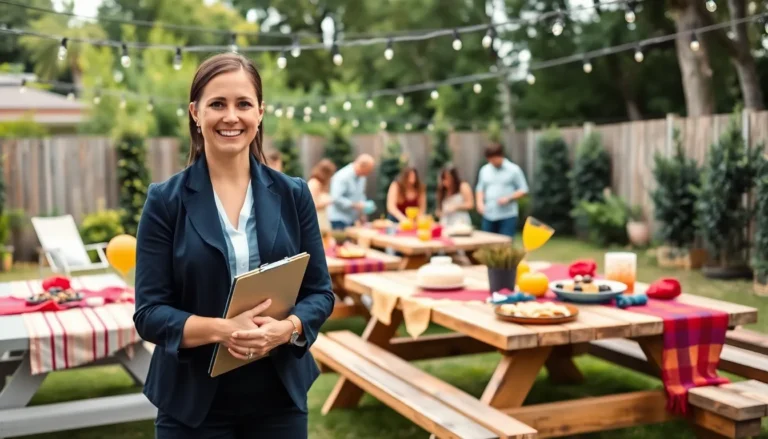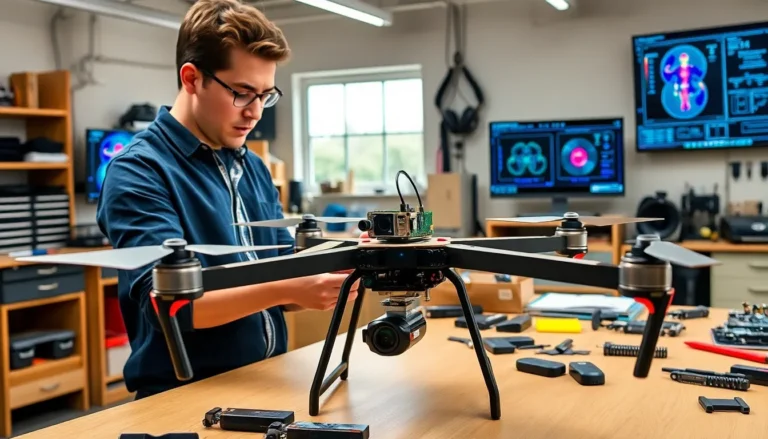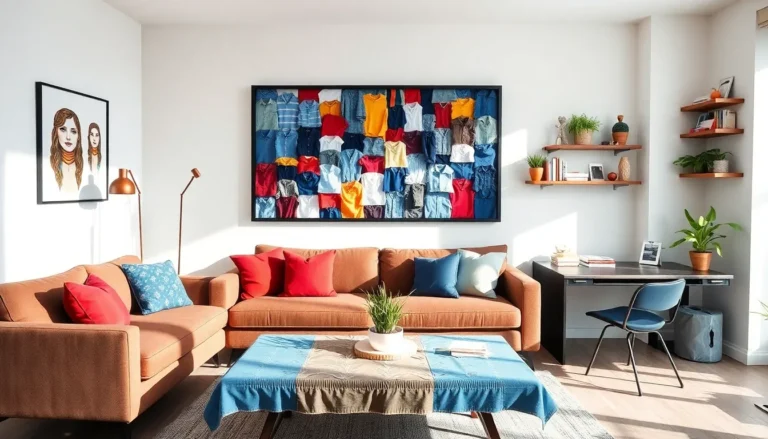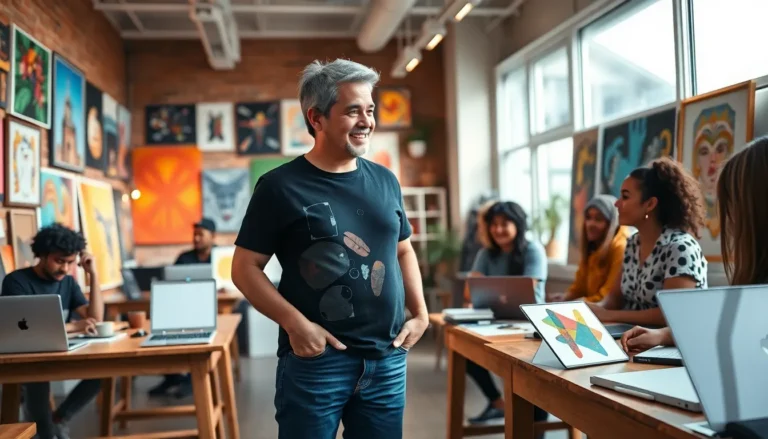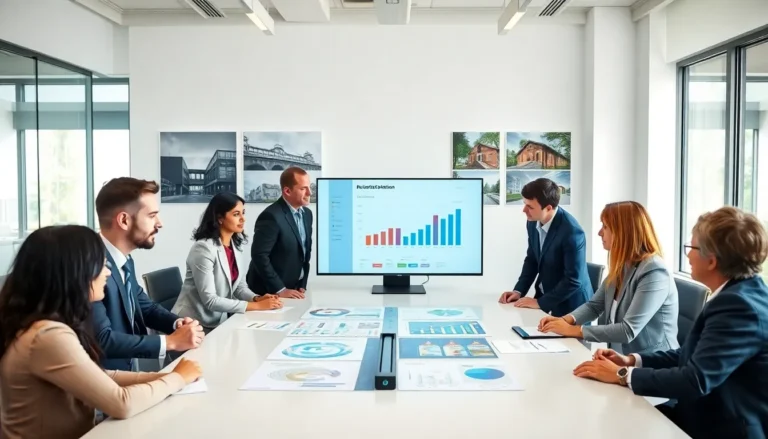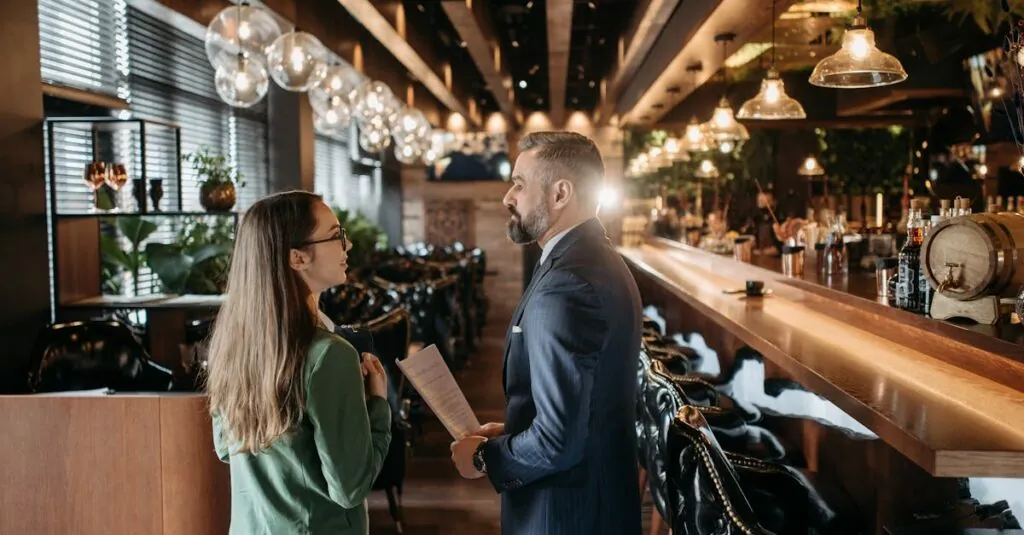Table of Contents
ToggleImagine walking into a restaurant where the ambiance makes you feel instantly at home, yet excited for an adventure. The right interior design can transform a simple meal into an unforgettable experience. It’s not just about the food; it’s about creating a vibe that keeps customers coming back for more.
From cozy nooks that invite long conversations to vibrant spaces that spark joy, restaurant interior design is a blend of creativity and strategy. Whether it’s a trendy eatery or a classic diner, the design sets the stage for memorable moments. Dive into a world of innovative ideas that can elevate any dining space and leave patrons raving about not just the menu, but the atmosphere too. After all, who wouldn’t want to dine in a place that feels as good as it tastes?
Importance Of Restaurant Interior Design
Restaurant interior design significantly affects customer experience. An inviting atmosphere encourages diners to savor their meals and linger longer. Well-executed design elements create a connection between the space and the food being served. Each detail, from color schemes to furniture choices, plays a crucial role in shaping perceptions.
Customer satisfaction often hinges on how comfortable and welcome the environment feels. A thoughtfully designed restaurant reduces stress and enhances enjoyment, leading to repeat visits. It’s not just about aesthetic appeal; it’s about functionality as well. Efficient layouts enable smooth service, contributing to overall satisfaction.
Unique design ideas can set a restaurant apart from competitors. A themed ambiance or innovative decor sparks interest and invites conversation among patrons. Restaurant owners should consider how lighting, acoustics, and layout influence the dining experience. Engaging visuals can turn a meal into a memorable event, encouraging word-of-mouth promotion.
Investing in effective interior design proves beneficial for the bottom line. Successful eateries frequently experience increased foot traffic, driven by a strong reputation for atmosphere. Research indicates that well-designed spaces can boost customer loyalty and overall revenue. Each design choice contributes to the restaurant’s story, enhancing not just appearance but experience as well.
Restaurant interior design shapes the overall dining experience and influences customer perceptions. Prioritizing thoughtful design strategies enhances atmospheres across various dining styles, ultimately driving customer satisfaction and loyalty.
Popular Restaurant Interior Design Ideas
Various restaurant interior design ideas enhance ambiance and customer experience. Unique styles can transform a dining space while reflecting the restaurant’s identity.
Contemporary Minimalism
Contemporary minimalism emphasizes simplicity and functionality. Clean lines define furniture choices, with neutral color palettes creating a calm atmosphere. Space optimization is essential in this design, fostering an uncluttered environment. Often, natural materials are used, adding warmth to modern aesthetics. Light fixtures feature sleek designs, complementing the overall vibe. Enclosed areas and open spaces blend seamlessly, encouraging a natural flow. Plants can serve as vibrant accents, improving air quality and aesthetic appeal. Overall, this design appeals to patrons who appreciate elegance and sophistication.
Rustic Charm
Rustic charm draws inspiration from nature and traditional aesthetics. Exposed beams and reclaimed wood give warmth and character to the space. Earthy tones dominate the color scheme, promoting a cozy and welcoming atmosphere. Stone accents contribute texture, enhancing the rustic appeal. Vintage decor elements, like old signage and antique furniture, add unique character. Warm lighting can create an inviting glow, encouraging diners to linger longer. Layers of textiles, such as burlap and linen, bring comfort to seating arrangements. This design style resonates with customers seeking familiarity and comfort.
Eclectic Style
Eclectic style combines diverse elements for a vibrant visual impact. A mix of patterns, colors, and textures creates an engaging environment. Furniture pieces might range from vintage to modern, producing a unique blend. Artwork can vary from local to global, adding personality to walls. Accessories are thoughtfully curated, contributing to a cohesive but varied atmosphere. Seating arrangements encourage interaction among diners, fostering community feeling. Statement lighting fixtures often serve as focal points, enhancing visual interest. Overall, this design appeals to adventurous diners seeking a memorable experience.
Key Elements Of Effective Restaurant Design
Thoughtful restaurant design hinges on specific elements that enhance the overall dining experience. Key components like color schemes, lighting choices, and furniture arrangement play significant roles in shaping an inviting atmosphere.
Color Schemes
Colors influence emotions and can set the mood for diners. Warm tones, such as reds and yellows, stimulate appetite while cool tones, like blues and greens, create a calming effect. A harmonious palette fosters an enjoyable ambiance, encouraging guests to stay longer. Unique combinations can also reflect a restaurant’s identity, whether through vibrant accents or subtle contrasts. Ultimately, selecting the right colors enhances the overall perception of the dining space.
Lighting Choices
Lighting affects not just visibility but also the mood within a restaurant. Soft, ambient lighting creates an intimate atmosphere, ideal for romantic dinners, while brighter light suits casual dining environments. Incorporating adjustable lighting solutions allows for versatility in different settings. Fixtures can also serve as design elements, from pendant lights to chandeliers, adding character and aesthetic appeal. Effective lighting design emphasizes architectural features and highlights menu offerings, enhancing the overall experience.
Furniture Arrangement
Furniture layout significantly impacts both functionality and comfort. Arranging tables and chairs to facilitate movement ensures a pleasant dining flow. Thoughtful spacing promotes intimacy without sacrificing privacy. Well-positioned seating encourages social interaction while maintaining a comfortable atmosphere. Using varied furniture styles can also create visual interest, while ergonomic designs enhance guest comfort. A strategic furniture arrangement not only improves guest experience but also optimizes the overall use of space.
Trends In Restaurant Interior Design
Current trends in restaurant interior design focus on sustainability and technology integration. These elements not only attract customers but also promote a more enjoyable dining experience.
Sustainability
Sustainable practices shape modern restaurant interiors. Designers often incorporate reclaimed materials to reduce environmental impact. Energy-efficient lighting further minimizes resource usage. Selecting plants for decor enhances air quality and adds a refreshing touch. Color palettes typically feature earthy tones, reflecting a connection to nature. This approach resonates deeply with eco-conscious diners who appreciate commitment to sustainability.
Technology Integration
Technology plays a crucial role in enhancing the dining experience. Many restaurants now utilize smart lighting systems that adjust to different times of day or events. Interactive tabletops engage guests while offering menu options and entertainment. Virtual waitlists streamline seating management, reducing overcrowding and wait times. Additionally, integrating mobile payment options simplifies transactions for customers, encouraging repeat visits. This focus on technology makes dining more convenient and enjoyable, meeting the expectations of today’s tech-savvy patrons.
Investing in thoughtful restaurant interior design is essential for creating an unforgettable dining experience. By focusing on elements like color schemes lighting and furniture arrangement restaurants can foster an inviting atmosphere that encourages patrons to return. Embracing current trends such as sustainability and technology not only enhances the ambiance but also appeals to modern diners.
Ultimately the right design choices can set a restaurant apart from the competition and significantly impact customer satisfaction and loyalty. A well-designed space is more than just aesthetics; it’s an integral part of the overall dining journey that keeps guests coming back for more.

